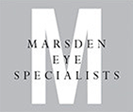What is it?
Like all structures in the human body, the eye has an intricate network of blood vessels that supply it with nutrients to sustain healthy vision. In some situations the arteries and veins that feed into the eye can be obstructed and this can cause central vision issues. This can be in the form of actual blockage in the blood vessels, narrow blood vessels or a thickened artery crossing over a vein. Uncontrolled blood pressure can also cause damage to the blood vessels into the eye as well
What are the signs and symptoms?
Individual experiences of patients who suffer from a vein or artery occlusion of the eye can vary, but common symptoms include:
- Sudden, painless blur or vision loss in one eye
- Missing spots in the visual field
- Fading vision
- Floaters
- Headaches
What are the risk factors?
Some risks factors to cause retinal vein and artery occlusions hypertensive retinopathy include:
- Being overweight
- A sedentary lifestyle
- A diet high in salt
- Stress
- A family history of high blood pressure
- Diabetes
- Moderate to high alcohol intake
- Blood clotting issues
- Age
How is it diagnosed?

Going for a routine eye exams is guaranteed method of detection, and trying to see your eye care specialist as soon you notice something is wrong is just as important to preserve vision as well. Your eye care professional will often check you vision and do a dilated eye exam to look for retinal pathology. This is often coupled with retinal scans and photos to identify the extent of the issue and an angiogram may be done to identify where the leakages in the eye are occurring.


 n
n